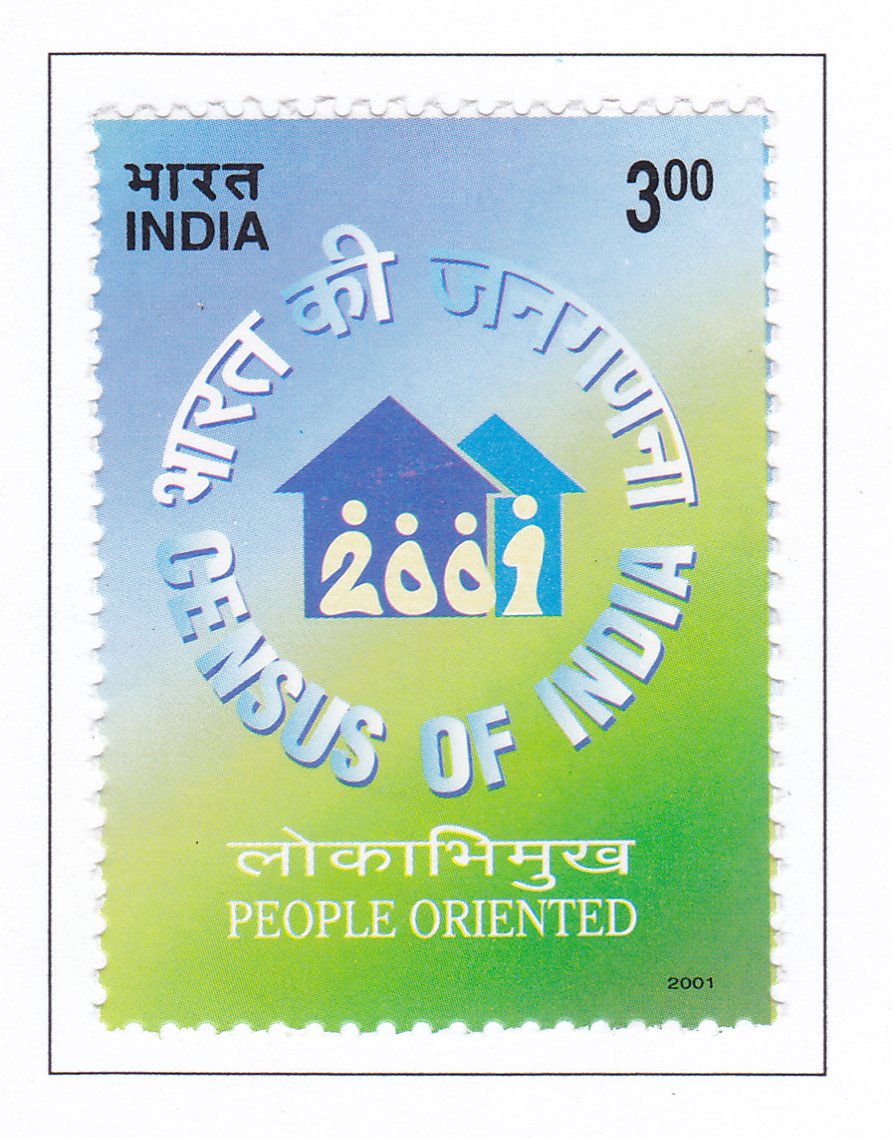Census of India

Technical Data
| Date of Issue | February 10, 2001 |
|---|---|
| Denomination | Rs. 3 |
| Quantity | 400,000 |
| Perforation | comb 13 |
| Printer | Eagle Press Ltd. |
| Watermark | No Watermark |
| Colors | Multicolor |
| Catalog Codes |
Michel IN 1821 Stamp Number IN 1881 Yvert et Tellier IN 1587 Stanley Gibbons IN 1988 |
| Themes | Census of Population |
Table of Contents
Historical Overview of Census in India
The history of census-taking in India reveals a long-standing tradition of population data collection that dates back to ancient times. Here’s a summary of its evolution and the significance of the 2001 Census:
Ancient and Medieval Times:
- Kautilya’s ‘Artha Shastra’: Written in the 3rd century B.C., Kautilya’s ‘Artha Shastra’ included provisions for collecting population data as part of state policy for taxation purposes.
- Mughal Period: During the Mughal era, extensive records were maintained on land, production, population, and famines, reflecting an organized approach to data collection.
Modern Census Era:
- Beginnings in 1872: The modern era of census-taking in India began in 1872 when census results from different regions were aggregated.
- Synchronous Census: From 1881 onwards, a complete and synchronized census has been conducted every ten years.
The 2001 Census:
- Scope and Scale: Scheduled from February 9 to 28, 2001, the 2001 Census was one of the largest administrative exercises globally, involving around two million enumerators and supervisors, including teachers, government officials, and local body officials.
Two Phases:
- Houselisting Operations (April-June 2000): The first phase focused on locating all human dwellings across the country to facilitate the second phase. This phase was adapted based on local conditions.
- Population Enumeration (February 9-28, 2001): The second phase involved the actual counting and data collection for population enumeration. In Jammu & Kashmir, this phase was conducted earlier in September 2000.
- Data Collection: Beyond merely counting heads, the census involved collecting detailed demographic, social, cultural, and economic information about every individual. This data was compiled into meaningful tables for analysis and usage.
Significance and Commemoration:
- Tradition of Reports and Studies: The Indian Census is known for producing detailed analytical reports and conducting ancillary studies to enrich the statistics.
- Postal Stamp: The Department of Posts issued a commemorative postage stamp to honor the Census 2001, reflecting its importance in India’s administrative and statistical framework.
The Indian Census has a rich history of adapting to contemporary needs while preserving the traditions of meticulous data collection and analysis, making it a cornerstone of the country’s demographic and socio-economic planning.
